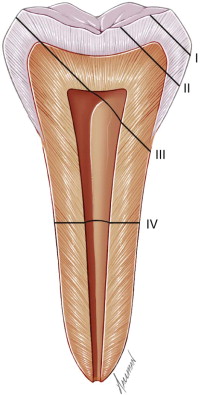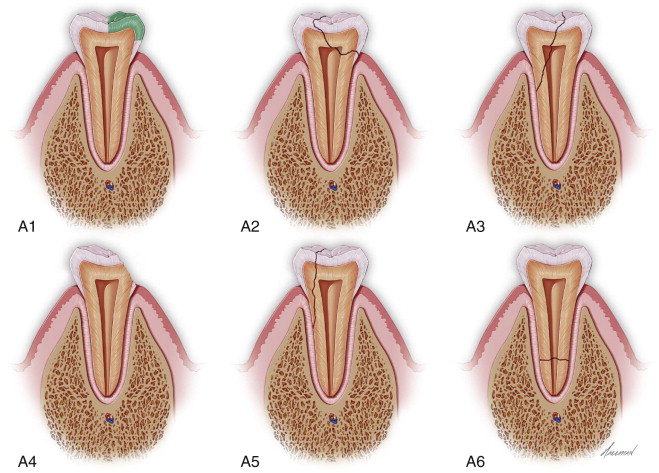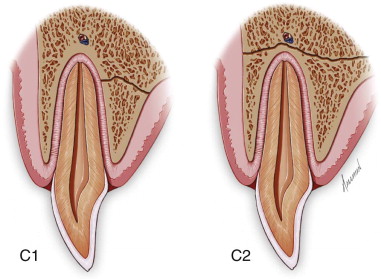Armamentarium
|
History of the Procedure
Maxillofacial trauma includes fractures to the cranium, midface, mandible, and dentoalveolar structures. Isolated trauma to the dentoalveolar structures often requires the interplay between maxillofacial surgeons and various other dental practitioners. Injuries to these areas can result in fractured and displaced teeth, loss of dentition coupled with intraoral and extraoral soft tissue trauma, and fractures of the alveolar bone. A surgeon initially stabilizes such injuries, especially when soft tissue structures and supporting bone are involved. Subsequent reciprocal referral to other dental practitioners facilitates appropriate restoration of the dentition and evaluation of pulp vitality.
Injuries to the oral structures can have a deleterious impact on function, aesthetics, and the permanent dentition depending on the age of the patient. The father of medicine, Hippocrates of Greece, described the importance of the occlusal alignment and used gold dental wires to align the dentition and reduce mandibular fractures.
Dentoalveolar injuries occur in all age groups. The prevalence and type of injury varies according to age, gender, and mechanism. Overall, emergency room visits resulting from trauma to the maxillofacial structures account for an estimated at 15% and, specifically, injuries to the dentoalveolar structures account for nearly 2%. In the pediatric group, trauma to the oral structures has been reported to account for around 5% of all facial fractures.
Mechanisms of Injury
Injuries to the dentition, its supporting structures, and surrounding soft tissue can occur because of falls, interpersonal violence and abuse, motor vehicle accidents, industrial accidents, contact sports, medical procedures, and penetrating objects. Patients who suffer from seizure disorders and mental disabilities are also subject to an increased risk. Not surprisingly, males are twice as likely to be affected as females due to increased participation in contact sports and a greater tendency to engage in interpersonal violence. An increased incidence of oral/dental trauma has been correlated to the increased participation in contact sports and, moreover, an increased frequency occurs during spring and summer.
Trauma can be sustained directly to the dental structures or occur secondarily, when the mandible is forcefully accelerated into occlusion against the maxilla. The anterior adult dentition is more prone to injury because of its prominent location. Compounding factors include an increased overjet of greater than 4 mm, labially inclined incisors, and short upper lip, characteristics exemplified in a class II division I malocclusion.
The pattern of injury and structural damage can vary between the pediatric and adult populations as a result of anatomic differences and degree of tissue development. The cranium is larger in relation to the midface and mandible in the pediatric population, hence the dentoalveolar structures are more anatomically protected and subsequently sustain a smaller percentage of traumas. The lack of sinus pneumatization, higher cancellous-to-cortical bone ratio, and developing dentition within the facial skeleton tend to increase the elasticity of facial bones, making them less vulnerable to fractures. Dental trauma in this population can adversely affect the development and eruption of permanent dentition by directly traumatizing the dental follicle and developing tooth. Traumatic forces inflicted on the primary dentition are transferred to the supporting structures, resulting in luxation type injuries, whereas the traumatic forces in the secondary dentition are transferred to the teeth themselves, resulting in crown and crown-root fractures.
Toddlers and young children usually suffer from falls due to poor coordination as they learn to coordinate skeletal movements with weight bearing and balance. There appears to be a bimodal distribution of injuries between ages 2 and 4 and 8 and 10, according to Andreasen. Further, in this demographic, cuts and abrasions sustained to the lip and mental region are often accompanied by primary teeth subluxation or crown fracture of the permanent dentition. Children and young adolescents tend to have a higher incidence of injuries from falls and bicycle accidents. Underlying suspicion of abuse should be considered when the pattern or degree of injury does not correlate with the mechanism of injury as explained by the supervising adult or caregiver. Trauma to the head and neck regions has been reported as high as 50% in cases of child abuse. The highest incidence of oral-dental injuries is observed in the older adolescent and young adult demographic between the ages 18 to 23 years old, stemming from sports injuries and motor vehicle accidents. Involvement in contact sports such as baseball, basketball, football, hockey, and wrestling can result in intraoral soft tissue injury and can be mitigated with use of mouth guards.
Classification of Injuries
Many classification systems have been proposed. The two most common systems are those developed by Ellis and Davey and Andreasen.
Ellis Classification
This is a simple and practical dental injury classification system ( Figure 63-1 ):
-
Type I: Fractures within enamel
-
Type II: Fractures involving enamel and dentin
-
Type III: Fractures involving pulp
-
Type IV: Root fractures

Andreasen Classification
The classification devised by Andreasen and adopted by the World Health Organization system for disease classification is simple, comprehensive, and easy to communicate with the dentist or pediatric dentist. Injuries are divided into dental tissues and pulp, periodontal tissues, and supporting bones ( Figure 63-2 ).
Injuries to Dental Tissues and Pulp
-
Crown infraction (craze lines without loss of tooth substance)
-
Complicated crown fracture producing a pulp exposure
-
Uncomplicated crown-root fracture without pulpal exposure
-
Complicated crown-root fracture with pulpal exposure
-
Root fractures (can be cervical, middle, or apical thirds and oblique root fractures)
Injuries to Periodontal Tissues
-
Concussion: Percussion sensitive without loosening of teeth
-
Subluxation: Tooth is loosened but not displaced
-
Luxation (lateral, intrusive, and extrusive luxations): Tooth is displaced without any fractures or comminution of the alveolar socket
-
Avulsion: Loss of teeth with or without supporting bone
Injuries to the Supporting Bone
-
Fracture of a single wall of an alveolus
-
Comminution of the alveolar housing, seen with intrusive or lateral luxation
-
En bloc fracture of the alveolar process, the fracture line not necessarily extending through a tooth socket
-
Fracture involving the main body of the mandible or maxilla
Injuries to Gingiva or Mucosal Regions
-
Abrasion
-
Contusion
-
Laceration



History of the Procedure
Maxillofacial trauma includes fractures to the cranium, midface, mandible, and dentoalveolar structures. Isolated trauma to the dentoalveolar structures often requires the interplay between maxillofacial surgeons and various other dental practitioners. Injuries to these areas can result in fractured and displaced teeth, loss of dentition coupled with intraoral and extraoral soft tissue trauma, and fractures of the alveolar bone. A surgeon initially stabilizes such injuries, especially when soft tissue structures and supporting bone are involved. Subsequent reciprocal referral to other dental practitioners facilitates appropriate restoration of the dentition and evaluation of pulp vitality.
Injuries to the oral structures can have a deleterious impact on function, aesthetics, and the permanent dentition depending on the age of the patient. The father of medicine, Hippocrates of Greece, described the importance of the occlusal alignment and used gold dental wires to align the dentition and reduce mandibular fractures.
Dentoalveolar injuries occur in all age groups. The prevalence and type of injury varies according to age, gender, and mechanism. Overall, emergency room visits resulting from trauma to the maxillofacial structures account for an estimated at 15% and, specifically, injuries to the dentoalveolar structures account for nearly 2%. In the pediatric group, trauma to the oral structures has been reported to account for around 5% of all facial fractures.
Mechanisms of Injury
Injuries to the dentition, its supporting structures, and surrounding soft tissue can occur because of falls, interpersonal violence and abuse, motor vehicle accidents, industrial accidents, contact sports, medical procedures, and penetrating objects. Patients who suffer from seizure disorders and mental disabilities are also subject to an increased risk. Not surprisingly, males are twice as likely to be affected as females due to increased participation in contact sports and a greater tendency to engage in interpersonal violence. An increased incidence of oral/dental trauma has been correlated to the increased participation in contact sports and, moreover, an increased frequency occurs during spring and summer.
Trauma can be sustained directly to the dental structures or occur secondarily, when the mandible is forcefully accelerated into occlusion against the maxilla. The anterior adult dentition is more prone to injury because of its prominent location. Compounding factors include an increased overjet of greater than 4 mm, labially inclined incisors, and short upper lip, characteristics exemplified in a class II division I malocclusion.
Stay updated, free dental videos. Join our Telegram channel

VIDEdental - Online dental courses


